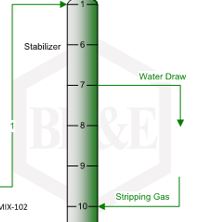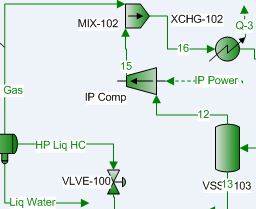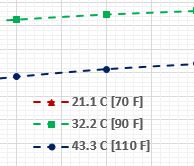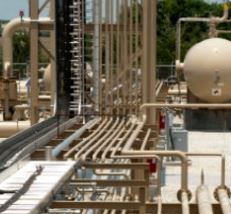
Non-Refluxed Split-Feed Condensate Stabilizer Column-Part 4
January 3, 2017
|
Tip of the Month
This tip is the follow up of December 2016 Tip of the Month (TOTM), which investigated the benefits of having a water-draw and its optimum location in a non-refluxed condensate stabilizer column.
View Article

Water-Draw in a Non-Refluxed Condensate Stabilizer Column: Part 3
December 5, 2016
|
Tip of the Month
This tip is the follow up of the previous tips (April and May 2016), which investigated the benefits of having a water-draw and its optimum location in a condensate stabilizer column. It will simulate the performance of an operating condensate stabilizer column equipped with side water-draw tray to remove liquid water.
View Article

Congratulations to Rick Groshong on AAPG award
November 4, 2016
|
PetroSkills News
Earlier this year, Dr. Rick Groshong received the Best Seminal Publication Award from the American Association of Petroleum Geologists (AAPG) Petroleum Structure and Geomechanics division for "3-D Structural Geology / A Practical Guide to Quantitative Surface and Subsurface Map Interpretation."
View Article

Charts and Correlation for Estimating Methanol Removal in TEG Gas Dehydration Process
November 3, 2016
|
Tip of the Month
Continuing the October 2010 tip of the month (TOTM), in this TOTM we will consider the presence of methanol in the produced oil/water/gas stream and determine the quantitative traces of methanol ending up in the TEG dehydrated gas.
View Article

Charts and Correlations for Estimating Methanol Removal in the Gas Sweetening Process
October 4, 2016
|
Tip of the Month
The gas-sweetening process by amines like methyldiethanolamine (MDEA) removes a considerable amount of methanol from a sour gas stream. Moreover, if the methanol content of the sour gas is high, the sweet gas may still retain high methanol content and can cause operational troubles in the downstream processes.
View Article

Piping Vibration Part 1: Natural Frequency of a Pipe
September 16, 2016
|
Facilities Topics
Part one of a four-part Piping Vibration series from PetroSkills instructor, Ron Frend.
View Article







